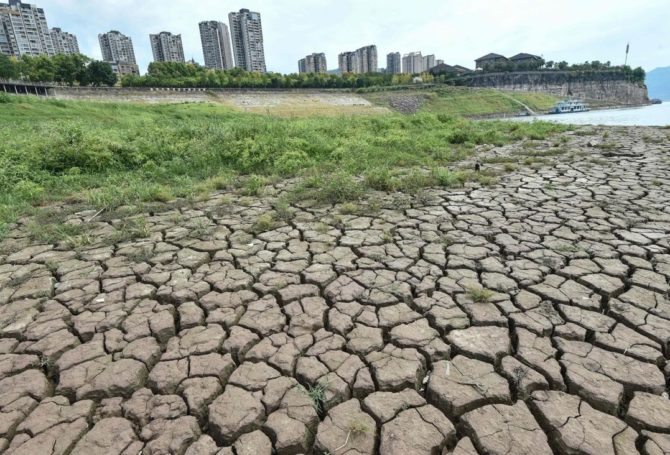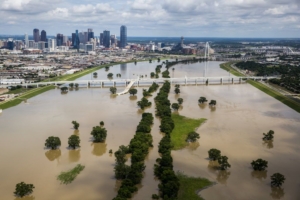
Sichuan Shutdowns Could Disrupt Supply Chains More Than COVID
The United States and China are competitors with intertwined economies and parallel climate events. China’s unprecedented 70-day heat streak has forced power rationing and factory closures, creating further strains on global supply chains, while large swaths of the United States are alternately baking and awash in flash floods.
Sichuan Province in southwestern China is withering under record temperatures reaching 110 degrees, aggravating a severe drought that has dried up water resources and forced hydropower cutbacks. The hard-hit region is home to more than 100 million Chinese, relies heavily on hydropower and encompasses an area the size of Texas, Colorado and California combined. With searing temperatures and no rainfall, Chinese officials have ordered manufacturing shutdowns to preserve hydro power for home use.

Large chunks of the United States are suffering extended drought, which has lead to flash flooding when torrents of rain fall over short periods of time, as it did this week in Dallas, Texas. The Trinity River spilled over its banks when a month’s worth of rain fell in a 24-hour period.
China’s heat wave coincides with simultaneous droughts, hot temperatures and monsoon rainstorms in Europe, East Africa and the United States. Parts of Texas have received a month’s worth of rain in 24-hour periods following extended drought conditions. At least five US cities have recorded one in a 1,000-year high temperatures in the last month.
Scientists see the global weather extremes as fresh evidence of climate change and its devastating effects, which include low water levels in European rivers and surging rain events that cause flash flooding in the United States. Meteorologist Bob Harmon told Axios, “We know when drought happens, a warming climate accentuates the impacts, parching the landscape and allowing temperatures to rise even further. We’ve seen the drought-and-heat playbook in action across the Northern Hemisphere this summer.”
Scorching temperatures and extended drought have already taken a toll on China’s economy and may contribute to slowdowns in the rest of the world that depends on its supply lines. Sichuan is a key global manufacturing center for computer chips, solar panels, lithium batteries and car parts. A one-week shutdown in Sichuan comes on the heels of a months-long lockdown in Shanghai earlier this year when a COVID outbreak triggered China’s zero-tolerance pandemic policy.
“These shutdowns have the potential to be equally if not more impactful on supply chains than recent COVID lockdowns,” says Mirko Woitzik, global director of intelligence for a supply-chain insights and risk analytics company.
Prominent companies feeling the pinch from Sichuan’s shutdown include Apple, Intel, Texas Instruments, Tesla and Toyota. Sichuan produces critical parts for Tesla’s “Gigafactory” in Shanghai that has so far produced 1 million Tesla electric vehicles.
The interlocking economic impacts of heat and drought on China and the United States make it more imperative for the two global leaders to resume conversations on how to address climate change.
Supply chain disruptions may be just the beginning. The prospect of continuing warming and drought will require manufacturing and distribution changes, which will create pressure to raise commodity prices. Heat and drought are having a huge effect on food production, including the region’s fall grain production, which is likely to lead to higher prices. Overheated facilities can negatively affect worker productivity. Major weather events affecting supply chains can increase inflationary pressure and result in unanticipated shortages.
The interlocking economic impacts of heat and drought on China and the United States make it more imperative for the two global leaders to resume conversations on how to address climate change. China broke off bilateral talks on climate change in response to House Speaker Nancy Pelosi’s trip to Taiwan earlier this month.
The current heat wave in China is the most severe since 1961 when China first kept records. More than 240 Chinese cities have reported temperatures exceeding 104 degrees. The heat wave coincides with China’s worst drought in nearly a decade. Facing a 50 percent drop in rainfall, Chinese officials are desperately trying to induce rain by seeding clouds. The heat wave in southern China has served as a grim reminder that a 2018 MIT report predicted northern China could become unlivable because of excessive heat as early as the end of this century.




